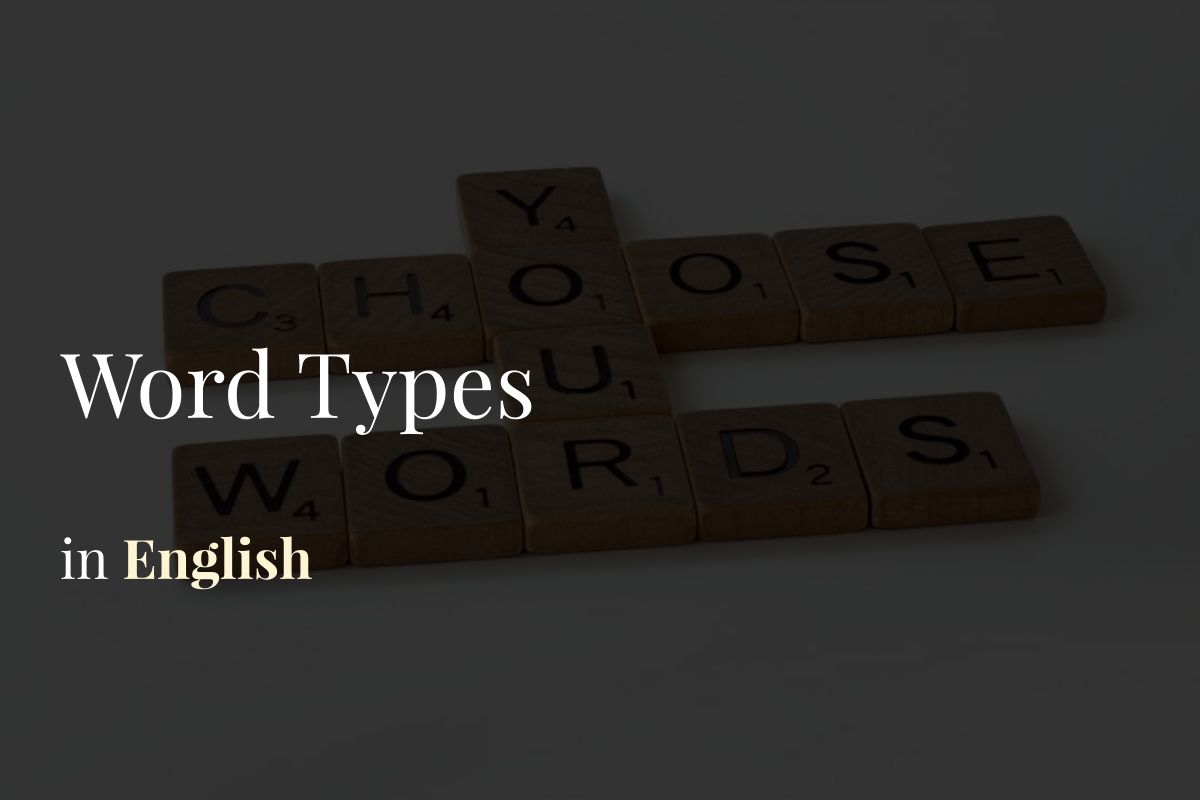
Introduction
Welcome, language learners, to a comprehensive guide on understanding the different word types in English! If you want to improve your grasp of this dynamic language, you’ve come to the right place. Mastering word types will enhance your English skills and enable you to communicate more effectively. Let’s explore this fascinating topic and delve into the various word types that shape English sentences!
“The limits of my language mean the limits of my world.”
Ludwig Wittgenstein
Understanding Different Word Types in English
Words in English can be classified into different types based on their roles and functions in sentences. These word types play a crucial role in determining sentence structure and meaning. By understanding these word types, you can strengthen your command of the language and express yourself clearly. In this guide, we will examine each word type in detail, providing practical examples and exercises to help you apply your knowledge effectively.
1. Nouns: Identifying People, Places, Things, and Ideas
Nouns are words that identify people, places, things, or ideas. They form the foundation of sentences and provide important context. For instance:
- My best friend’s name is Sarah.
- We visited London during our vacation.
- The dog chased its tail in the park.
- I bought a new phone yesterday.
- Learning a new language is a rewarding experience.
- He enjoys playing soccer with his friends.
- The rain made everything wet.
- I need to buy some milk from the store.
- She loves reading books in her free time.
- The sun shines brightly in the sky.
2. Verbs: Expressing Actions and States
Verbs are action words that express what someone or something does or describe the state of someone or something. They bring sentences to life. Let’s look at some examples:
- I play the guitar as a hobby.
- They study hard for their exams.
- He works as a teacher at a local school.
- We watched an interesting movie last night.
- She enjoys swimming in the ocean.
- He cooked a delicious meal for his family.
- The baby cries when she’s hungry.
- They dance together at parties.
- I listen to music to relax.
- We travel to new places for adventure.
3. Adjectives: Describing Nouns
Adjectives provide additional information about nouns, describing or modifying their qualities or characteristics. They make sentences more vivid and descriptive. Consider these examples:
- She has a beautiful smile.
- He lives in a small house near the beach.
- The sky turned dark during the storm.
- I found an interesting book to read.
- This cake tastes delicious.
- We went on a long hike in the mountains.
- The movie was exciting and action-packed.
- He wore a fancy suit to the party.
- She received a special gift for her birthday.
- The room was clean and tidy after she organized it.
4. Adverbs: Modifying Verbs, Adjectives, Adverbs, and even Sentences
Adverbs modify verbs, adjectives, or other adverbs, providing more information about how, when, where, or to what extent an action occurs. They add depth to our sentences. Check out these examples:
- She speaks fluently in three languages.
- He writes neatly in his notebook.
- They walked slowly through the park.
- He was extremely happy when he won the game.
- She drives carefully to avoid accidents.
- I can hear the birds clearly from my window.
- He laughs loudly at jokes.
- She sings beautifully in the choir.
- They are always on time for meetings.
- I read the book quickly to finish it before bed.
5. Pronouns: Replacing Nouns
Pronouns replace nouns to avoid repetition and make sentences more concise. They make our conversations smoother. Here are some common pronouns:
- I enjoy playing guitar.
- Can you pass me the salt, please?
- He is my brother.
- She loves to swim in the ocean.
- We are going to the park.
- They have a big house.
- It is a sunny day.
- You need to study for your test.
- He wants to go to the movies.
- She is my best friend.
6. Prepositions: Showing Relationships
Prepositions indicate the relationship of a noun or pronoun to other words in a sentence. They help us understand position, direction, or time. Consider these examples:
- The book is on the table.
- In the morning, I like to go for a jog.
- She lives in a big city.
- The ball rolled under the couch.
- They met at the park.
- We sat beside each other in class.
- The cat jumped over the fence.
- I made a sandwich with cheese and ham.
- He arrived after the movie started.
- She ran through the rain to catch the bus.
7. Conjunctions: Connecting Words, Phrases, or Clauses
Conjunctions link different parts of a sentence, showing relationships between words, phrases, or clauses. They join our sentences together. Take a look at these examples:
- I like apples, but I don’t like oranges.
- She wanted to go out, so she called her friends.
- He studied hard, and he passed the exam.
- I want ice cream, or I want cake.
- I enjoy playing soccer, while my sister prefers basketball.
- He can play the guitar, yet he can’t read sheet music.
- I finished my work early, therefore I can relax now.
- She ordered a pizza, but they delivered pasta by mistake.
- They went to the beach, and they had a picnic.
- She wants to become a doctor, so she is studying medicine.
8. Articles: Specifying Nouns as Definite or Indefinite
Articles are words used to specify a noun as definite or indefinite. They help us understand whether we’re referring to something specific or something in general. Let’s explore the different types of articles:
- I saw a bird outside my window.
- He enjoys reading the newspaper every morning.
- We bought an umbrella for the rain.
- I want to go to the park to relax.
- He has an interesting job.
- We ate the delicious cake at the bakery.
- I saw a small dog in the park.
Understanding word types helps us navigate the complexities of English sentence construction. By practicing the identification of these word types and using them appropriately in sentences, you will enhance your language skills and communicate more fluently.
Let’s practice with some exercises
- Sentence: The cat is sleeping. Word Types: Noun (cat), verb (is sleeping)
- Sentence: She quickly ran to the store. Word Types: Pronoun (She), adverb (quickly), verb (ran), preposition (to), noun (store)
- Sentence: The blue car drives slowly. Word Types: Article (The), adjective (blue), noun (car), verb (drives), adverb (slowly)
- Sentence: He will eat the delicious cake. Word Types: Pronoun (He), verb (will eat), article (the), adjective (delicious), noun (cake)
- Sentence: I am studying English for my exam tomorrow. Word Types: Pronoun (I), verb (am studying), noun (English, exam), preposition (for), pronoun (my), noun (tomorrow)
- Sentence: Lisa bought three books from the bookstore. Word Types: Noun (Lisa, books, bookstore), verb (bought), numeral (three), preposition (from), article (the)
- Sentence: They played soccer in the park. Word Types: Pronoun (They), verb (played), noun (soccer, park), preposition (in), article (the)
- Sentence: His dog is very friendly. Word Types: Pronoun (His), noun (dog), verb (is), adverb (very), adjective (friendly)
- Sentence: We should finish our homework before dinner. Word Types: Pronoun (We), verb (should finish), noun (homework, dinner), preposition (before), article (our)
- Sentence: The students eagerly listened to the teacher. Word Types: Article (The), noun (students, teacher), adverb (eagerly), verb (listened), preposition (to)
Practice these exercises to improve your ability to identify different word types in English. If you have any questions, feel free to leave them in the comments section below!
